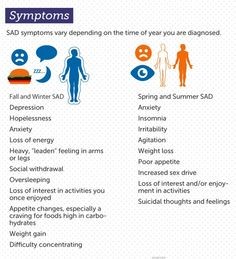
Contents
Can Rain Make You Depressed?
There is a strong connection between mood and weather, studies have found. Some people can handle the rain, while others need the warmth of the sun. Surprisingly, weather reactivity can run in families.
One study shows that about nine percent of adults consider themselves "rain haters." This group feels angry and less happy on days with more rain. This explains the feeling of melancholy on rainy days, where our bodies produce less serotonin, which affects mood.
- General associations with weather and mood:
- Doctors advise caution when interpreting the relationship between mood and weather. The change in mood based on weather depends on our perception of it.
- For example, if summer is a time for visiting friends and going on vacation, it’s understandable to feel down when it rains.
- It also depends on our background and how extreme weather affects our well-being.
- For instance, a drought-stricken farmer would likely be relieved that the hot weather has ended, while an ice-cream salesperson may have a different perspective on the same rainy day.
- Many specialists believe that widespread depression due to weather is not uncommon.
- People with existing mental health issues report that weather can worsen or improve their symptoms.
- This is likely because severe weather causes higher stress levels, which can worsen symptoms of diseases.
- For example, traveling home from work on an underground train is more stressful in 36°C temperature than in the rain.
- Stress can exacerbate various mental health issues like depression, anxiety, and obsessive-compulsive disorder.
- Changing weather can also affect other mental health disorders such as phobias.
- 1 in 10 Americans have phobias related to certain types of weather like thunder, lightning, flooding, and tornadoes.
- Experiencing such weather can be uncomfortable and stressful for those with phobias.
- Seasonal Affective Disorder (SAD) is a type of depression characterized by seasonal patterns.
- People with SAD experience depressive symptoms only during specific weather conditions.
- Bad weather and dark clouds often make individuals feel more depressed and inclined to cancel plans or stay home.
- Sunlight helps produce vitamin D and serotonin, which naturally combat depression and boost energy and happiness.
16 signs and symptoms of SAD
Weather changes can affect emotions, especially during the winter. This is known as Seasonal Affective Disorder (SAD), which is attributed to reduced sunlight rather than cold temperatures. Overcast skies can trigger depression symptoms.
SAD symptoms are similar to those of general depression but occur regularly at specific times of the year. The nature and severity of SAD vary from person to person.
16 common symptoms of SAD include:
- Drowsiness during the day and difficulty getting out of bed in the morning
- Craving carbohydrate-rich foods
- Depression (feeling sad, guilty, hopeless, apathetic, having low self-esteem)
- Anxiety
- Excessive sleepiness or disturbed sleep
- Lethargy or fatigue
- Irritability and social avoidance
- Loss of libido and decreased interest in sex
- Inability to enjoy things that usually bring pleasure
- Feeling sluggish, heavy, or agitated
- Difficulty concentrating on daily tasks
- Thoughts of death or suicide
- Problems with school or work
- Relationship problems
- Feelings of boredom and loneliness
- Physical problems such as headaches and weight gain
Fall and winter SAD:
The following four symptoms are unique to winter depression or winter-related SAD:
- Oversleeping
- Increased appetite, especially for carbohydrate-rich foods
- Weight gain
- Tiredness or low energy
Spring and summer SAD:
Summer-onset SAD or summer depression can cause the following four symptoms:
- Insomnia (trouble sleeping)
- Poor appetite
- Weight loss
- Restlessness or anxiety
Seasonal changes in bipolar disorder:
- For some people with bipolar disorder, spring and summer can trigger mania or milder forms of mania, while fall and winter can cause depression.
If you experience any of these symptoms and find no relief, it is important to consult a doctor or therapist.
QUESTION
What are the treatment options for seasonal affective disorder?
Symptoms typically improve with the start of a new season, whether it’s spring after winter or fall after summer. However, if you are prone to Seasonal Affective Disorder (SAD) or have experienced symptoms before, it is important to recognize and manage them in preparation for seasonal changes:
- Be aware of seasonal variations to better understand mood swings
- Engage in regular exercise and maintain consistent sleep patterns
- Eat a healthy and nutritious diet to maintain energy levels
- Expose yourself to natural light by having lunch outside or sitting near windows that let in light
In addition to adopting a healthy lifestyle and sleep routine, common treatments for SAD include:
- Medication:
- Antidepressants, often selective serotonin reuptake inhibitors, are frequently prescribed for SAD. They help increase serotonin levels in the brain, improving mood.
- Light therapy:
- This treatment assumes that increased exposure to bright artificial light during fall and winter can alleviate symptoms of SAD. Sitting in front of a lightbox emitting 10,000 lux of cool-white fluorescent light for 20 to 60 minutes every morning is often recommended.
- Vitamin D supplementation:
- A blood test can determine if your vitamin D levels are low, and supplementation may be recommended if diet alone is insufficient.
- Cognitive-behavioral therapy (CBT):
- This therapy helps guide behavior and thought processes, teaching individuals to recognize and replace negative thoughts and manage SAD symptoms.
Studies have shown that both light therapy and CBT can be effective for SAD during acute depressive episodes and can be considered as treatment options.
In conclusion, prolonged rainy weather can lead to depression in some individuals, which is not uncommon.
- Sunlight is necessary to convert vitamin D to its active form.
- Vitamin D affects serotonin levels in the brain, which play a role in mood regulation.
- When serotonin levels are low, depression-like symptoms are more likely, especially during the rainy season, which is one characteristic of Seasonal Affective Disorder.


